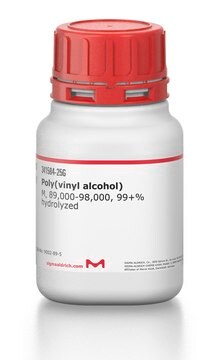All Photos(1)
About This Item
Linear Formula:
Al2O3
CAS Number:
Molecular Weight:
101.96
EC Number:
MDL number:
UNSPSC Code:
12352311
PubChem Substance ID:
Recommended Products
grade
CP
reaction suitability
reagent type: catalyst
core: aluminum
availability
available only in Japan
mp
2040 °C (lit.)
SMILES string
O=[Al]O[Al]=O
InChI
1S/2Al.3O
InChI key
TWNQGVIAIRXVLR-UHFFFAOYSA-N
Looking for similar products? Visit Product Comparison Guide
Storage Class Code
13 - Non Combustible Solids
WGK
nwg
Flash Point(F)
Not applicable
Flash Point(C)
Not applicable
Personal Protective Equipment
dust mask type N95 (US), Eyeshields, Gloves
Choose from one of the most recent versions:
Certificates of Analysis (COA)
Lot/Batch Number
Don't see the Right Version?
If you require a particular version, you can look up a specific certificate by the Lot or Batch number.
Already Own This Product?
Find documentation for the products that you have recently purchased in the Document Library.
G Siddiqi et al.
Dalton transactions (Cambridge, England : 2003), 44(32), 14349-14353 (2015-07-23)
A simple one-step and gram-scale synthesis of [Au5Mes5] from AuCl3 was developed, and this molecular precursor was used to generate Au nanoparticles on SiO2 and Al2O3. While [Au5Mes5] does not react with surface silanols and is only physisorbed, its incipient
Joohoon Kang et al.
ACS nano, 9(4), 3596-3604 (2015-03-19)
Solution dispersions of two-dimensional (2D) black phosphorus (BP)--often referred to as phosphorene--are achieved by solvent exfoliation. These pristine, electronic-grade BP dispersions are produced with anhydrous organic solvents in a sealed-tip ultrasonication system, which circumvents BP degradation that would otherwise occur
Chien-Chih Lin et al.
Nanoscale, 5(17), 8090-8097 (2013-07-25)
We demonstrated a promising route for enhancing temperature sensitivity, improving saturation voltage, and reducing power consumption of the MOS(p) tunneling temperature sensors by introducing ultrathin Al2O3 into the dielectric stacks. Detailed illustrations of the working mechanism and device concept are
Jaakko Akola et al.
Proceedings of the National Academy of Sciences of the United States of America, 110(25), 10129-10134 (2013-06-01)
Glass formation in the CaO-Al2O3 system represents an important phenomenon because it does not contain typical network-forming cations. We have produced structural models of CaO-Al2O3 glasses using combined density functional theory-reverse Monte Carlo simulations and obtained structures that reproduce experiments
Colin J Ingham et al.
Biotechnology advances, 30(5), 1089-1099 (2011-08-23)
Porous aluminum oxide (PAO) is a ceramic formed by an anodization process of pure aluminum that enables the controllable assembly of exceptionally dense and regular nanopores in a planar membrane. As a consequence, PAO has a high porosity, nanopores with
Our team of scientists has experience in all areas of research including Life Science, Material Science, Chemical Synthesis, Chromatography, Analytical and many others.
Contact Technical Service



